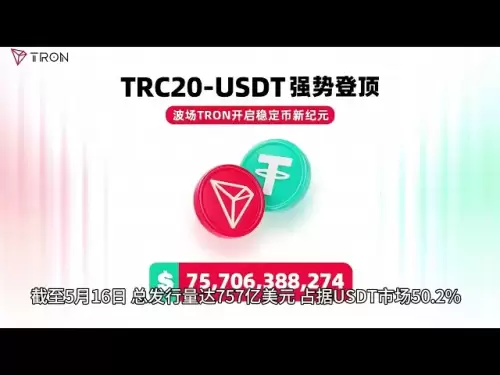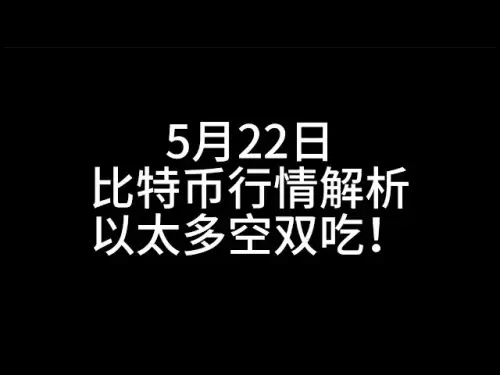-
 Bitcoin
Bitcoin $111,325.2168
2.08% -
 Ethereum
Ethereum $2,666.2932
3.87% -
 Tether USDt
Tether USDt $1.0002
0.01% -
 XRP
XRP $2.4327
1.31% -
 BNB
BNB $681.9858
2.68% -
 Solana
Solana $179.1127
3.93% -
 USDC
USDC $0.9997
0.01% -
 Dogecoin
Dogecoin $0.2414
4.06% -
 Cardano
Cardano $0.8034
4.89% -
 TRON
TRON $0.2776
1.86% -
 Sui
Sui $3.9288
-1.06% -
 Chainlink
Chainlink $16.8056
4.18% -
 Hyperliquid
Hyperliquid $32.2182
16.40% -
 Avalanche
Avalanche $25.0557
7.79% -
 Stellar
Stellar $0.3015
2.72% -
 Shiba Inu
Shiba Inu $0.0...01533
3.59% -
 Bitcoin Cash
Bitcoin Cash $434.9050
6.76% -
 Hedera
Hedera $0.2041
2.61% -
 UNUS SED LEO
UNUS SED LEO $8.8637
0.64% -
 Toncoin
Toncoin $3.1709
2.43% -
 Polkadot
Polkadot $4.9338
3.62% -
 Litecoin
Litecoin $99.2149
2.59% -
 Monero
Monero $400.2926
9.45% -
 Bitget Token
Bitget Token $5.2097
-0.56% -
 Pepe
Pepe $0.0...01444
3.52% -
 Pi
Pi $0.8132
-0.10% -
 Dai
Dai $0.9999
0.01% -
 Ethena USDe
Ethena USDe $1.0004
-0.04% -
 Bittensor
Bittensor $474.4408
11.01% -
 Uniswap
Uniswap $6.4668
2.17%
Is the golden cross and dead cross signal of StochRSI accurate? How to avoid false signal interference?
StochRSI golden and dead crosses help crypto traders spot trends, but accuracy varies; using multiple indicators and volume analysis can reduce false signals.
May 22, 2025 at 06:49 pm
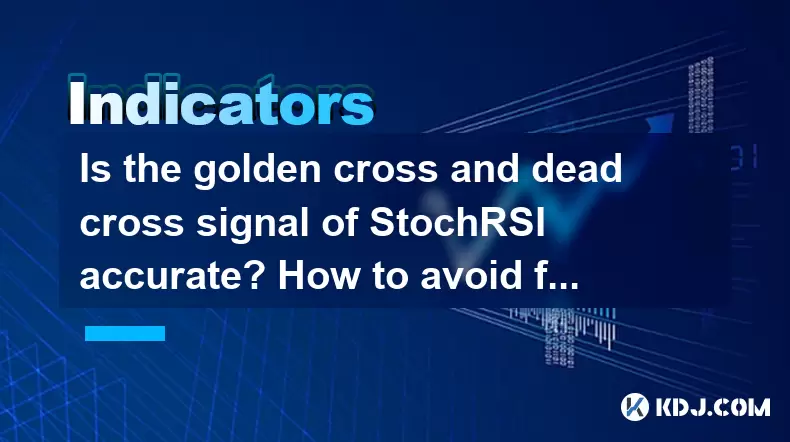
The golden cross and dead cross signals generated by the Stochastic RSI (StochRSI) are popular tools used by traders within the cryptocurrency market to identify potential buy and sell opportunities. The StochRSI is a momentum oscillator that ranges between 0 and 1, and it's derived from the Relative Strength Index (RSI). Understanding the accuracy of these signals and how to avoid false signals can significantly improve trading decisions.
The Golden Cross and Dead Cross in StochRSI
The golden cross and dead cross in StochRSI refer to specific patterns that occur when the StochRSI line crosses certain thresholds. A golden cross occurs when the StochRSI line crosses above a predetermined threshold, typically 0.2 or 0.3, signaling a potential bullish trend. Conversely, a dead cross happens when the StochRSI line falls below a certain threshold, often 0.7 or 0.8, indicating a potential bearish trend. These signals are based on the assumption that when the StochRSI moves out of overbought or oversold territories, it may signify a reversal in market momentum.
Accuracy of StochRSI Signals
The accuracy of the golden cross and dead cross signals in StochRSI can vary depending on several factors. Market volatility, timeframe used, and the specific thresholds chosen can all influence the reliability of these signals. In highly volatile markets, the StochRSI might generate more false signals as prices fluctuate rapidly. Conversely, in more stable markets, the signals might be more reliable. Additionally, the timeframe used for the StochRSI can affect its accuracy; shorter timeframes may lead to more frequent but less reliable signals, while longer timeframes might produce fewer but more dependable signals.
False Signals and Their Impact
False signals occur when the StochRSI indicates a trend reversal that does not materialize. These can lead traders to enter or exit positions prematurely, resulting in potential losses. False signals are particularly common in choppy or sideways markets, where the StochRSI can oscillate rapidly around the key thresholds without a clear directional trend. Recognizing and mitigating the impact of false signals is crucial for effective trading.
Strategies to Avoid False Signals
To minimize the impact of false signals, traders can employ several strategies. One effective approach is to use multiple indicators in conjunction with StochRSI. For instance, combining StochRSI with other momentum indicators like the Moving Average Convergence Divergence (MACD) or trend-following indicators such as Moving Averages can help confirm the signals generated by StochRSI. If multiple indicators align, the likelihood of a false signal decreases.
Another strategy involves adjusting the StochRSI parameters. By experimenting with different thresholds for the golden and dead crosses, traders can fine-tune the indicator to suit their trading style and the specific cryptocurrency they are analyzing. For example, setting a higher threshold for the golden cross might reduce the number of false bullish signals, while a lower threshold for the dead cross might help avoid premature bearish signals.
Using Additional Confirmation Tools
In addition to using multiple indicators, traders can employ other tools to confirm StochRSI signals. Price action analysis can be particularly useful. For instance, if a golden cross signal is accompanied by a clear bullish candlestick pattern, such as a hammer or engulfing pattern, the signal's reliability increases. Similarly, a dead cross signal reinforced by bearish candlestick patterns, like a shooting star or bearish engulfing, can provide stronger confirmation.
Volume Analysis
Volume is another critical factor to consider when evaluating the reliability of StochRSI signals. A significant increase in trading volume accompanying a golden cross can indicate strong buying interest, suggesting a higher probability of a sustained upward move. Conversely, a substantial volume spike with a dead cross might signal strong selling pressure, increasing the likelihood of a continued downtrend. By incorporating volume analysis, traders can better assess the strength of the signals provided by the StochRSI.
Practical Application of StochRSI Signals
To apply StochRSI signals effectively, traders should follow a systematic approach. Here are some practical steps to consider:
- Identify the StochRSI settings: Determine the appropriate thresholds for the golden and dead crosses based on the cryptocurrency's volatility and your trading timeframe.
- Monitor the StochRSI line: Watch for the StochRSI line to cross above or below the chosen thresholds.
- Confirm with other indicators: Use additional indicators like MACD or Moving Averages to validate the StochRSI signal.
- Analyze price action: Look for supportive candlestick patterns or other price action signals that align with the StochRSI signal.
- Evaluate volume: Check for significant volume changes that corroborate the StochRSI signal.
- Execute trades: If all conditions are met, consider entering or exiting positions based on the confirmed signal.
Real-World Examples
To illustrate the use of StochRSI signals in the cryptocurrency market, consider the following examples:
- Bitcoin (BTC) Golden Cross: Suppose the StochRSI for Bitcoin crosses above 0.2, signaling a golden cross. If this signal is confirmed by a bullish MACD crossover and a significant increase in trading volume, it might be a strong indication to enter a long position.
- Ethereum (ETH) Dead Cross: If the StochRSI for Ethereum falls below 0.8, indicating a dead cross, and this is supported by a bearish engulfing candlestick pattern and a spike in volume, it could be a reliable signal to consider selling or shorting the cryptocurrency.
Frequently Asked Questions
Q1: Can StochRSI be used effectively on all timeframes?
A1: While StochRSI can be applied to various timeframes, its effectiveness varies. Shorter timeframes may generate more frequent signals but with higher chances of false positives. Longer timeframes tend to produce fewer but potentially more reliable signals. Traders should experiment with different timeframes to find the optimal setting for their strategy.
Q2: How often should I recalibrate my StochRSI settings?
A2: The frequency of recalibrating StochRSI settings depends on market conditions and the specific cryptocurrency being traded. In highly volatile markets, more frequent adjustments might be necessary. However, a good practice is to review and adjust settings periodically, such as weekly or monthly, to ensure they remain effective.
Q3: Are there any cryptocurrencies where StochRSI signals are particularly unreliable?
A3: StochRSI signals can be less reliable for cryptocurrencies with extremely low liquidity or those that are heavily manipulated. Low-liquidity cryptocurrencies may exhibit erratic price movements, leading to more false signals. Similarly, cryptocurrencies prone to pump-and-dump schemes can generate misleading StochRSI signals due to artificial price spikes.
Q4: Can StochRSI be used for both short-term and long-term trading?
A4: Yes, StochRSI can be used for both short-term and long-term trading, but the approach differs. For short-term trading, traders might use shorter timeframes and more sensitive settings to capture quick price movements. For long-term trading, longer timeframes and less sensitive settings might be more appropriate to identify sustained trends.
Disclaimer:info@kdj.com
The information provided is not trading advice. kdj.com does not assume any responsibility for any investments made based on the information provided in this article. Cryptocurrencies are highly volatile and it is highly recommended that you invest with caution after thorough research!
If you believe that the content used on this website infringes your copyright, please contact us immediately (info@kdj.com) and we will delete it promptly.
- Bitcoin soared to a new all-time high above $111,000
- 2025-05-22 23:40:13
- Pepe and Influencer Pepe (INPEPE): The Rumors, Shiba's History, and Why INPEPE Could Be the Next Big Winner
- 2025-05-22 23:40:13
- Influencers Are Flocking to This Next-Gen Meme Coin, Delivering 100x Returns to Early Investors
- 2025-05-22 23:35:28
- Could Solaxy Grow , But Is It Really What Solana Needs?
- 2025-05-22 23:35:28
- Internet Computer Protocol (ICP) Has Gained 6.7% in the Past 24 Hours
- 2025-05-22 23:30:13
- Bitcoin (BTC) Hits New All-Time High of $111,861, Lifting Cardano (ADA) Price
- 2025-05-22 23:30:13
Related knowledge
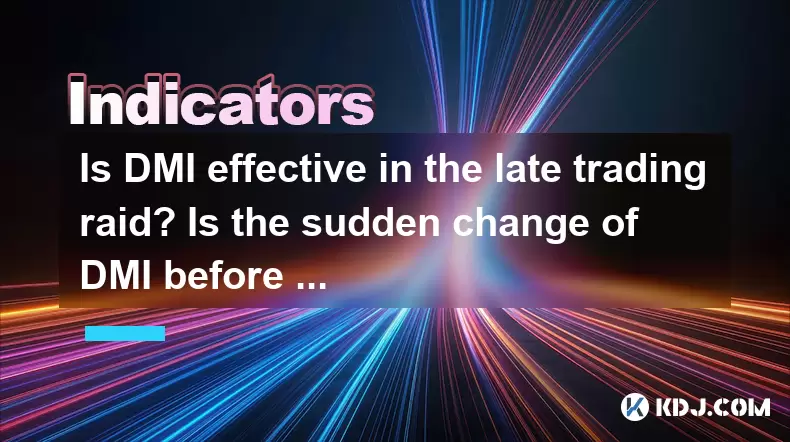
Is DMI effective in the late trading raid? Is the sudden change of DMI before the closing credible?
May 22,2025 at 11:07pm
Understanding DMI in Cryptocurrency TradingDirectional Movement Index (DMI), often referred to simply as DMI, is a technical analysis tool used by traders to assess the strength and direction of a price trend. In the context of cryptocurrency trading, DMI can be particularly useful for identifying potential entry and exit points. The DMI consists of thr...
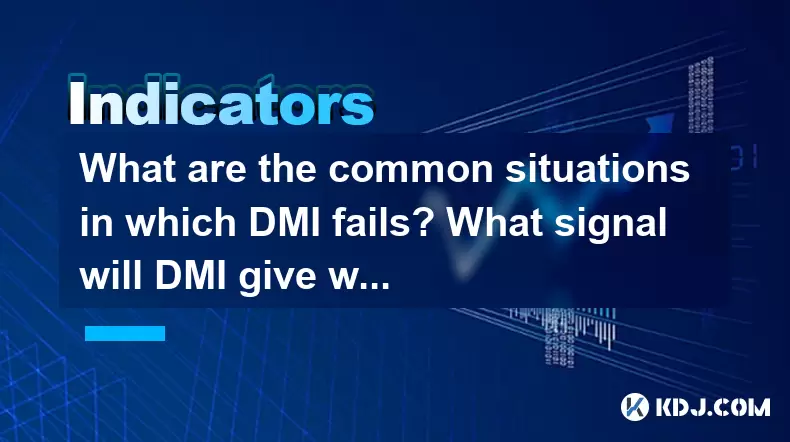
What are the common situations in which DMI fails? What signal will DMI give when there is a false breakthrough?
May 22,2025 at 11:49pm
The Directional Movement Index (DMI) is a popular technical analysis indicator used by traders in the cryptocurrency market to determine the strength of a trend and potential trading opportunities. However, like all technical indicators, the DMI is not infallible and can sometimes fail to provide accurate signals. This article will explore common situat...
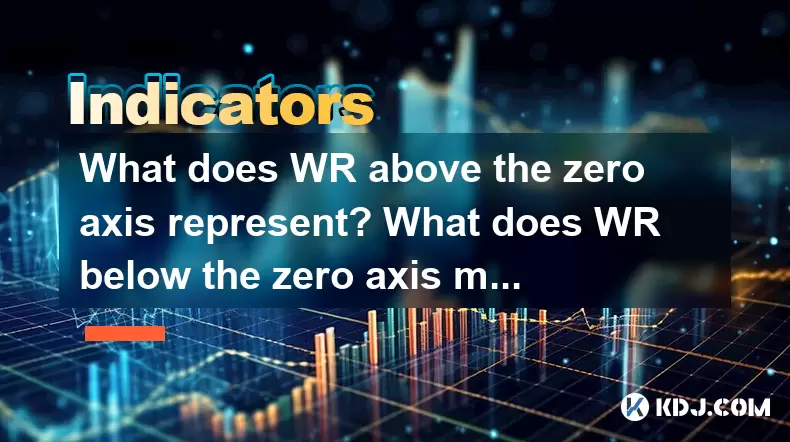
What does WR above the zero axis represent? What does WR below the zero axis mean?
May 22,2025 at 11:56pm
In the realm of cryptocurrency trading, technical analysis plays a crucial role in understanding market trends and making informed decisions. One of the key indicators used by traders is the Williams %R (WR), a momentum indicator that helps identify overbought and oversold conditions in the market. This article will delve into the significance of the WR...
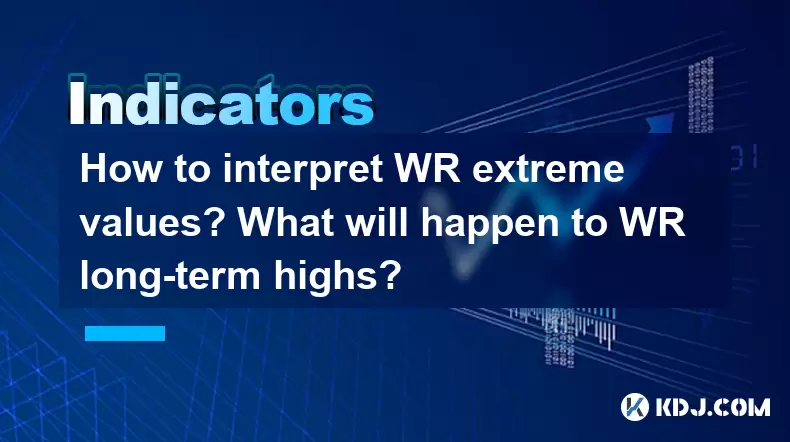
How to interpret WR extreme values? What will happen to WR long-term highs?
May 22,2025 at 10:36pm
The Williams %R (WR) indicator is a momentum indicator used in technical analysis to measure overbought and oversold levels in the market. Developed by Larry Williams, the WR indicator helps traders identify potential reversal points in the price of an asset. In this article, we will delve into how to interpret extreme values of the WR indicator and wha...
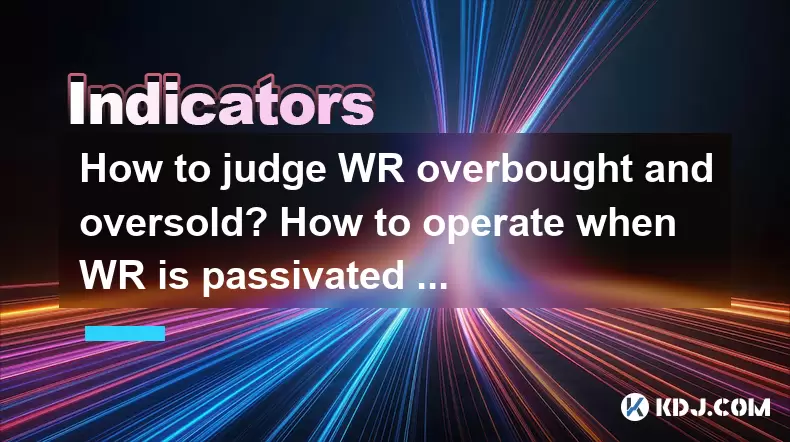
How to judge WR overbought and oversold? How to operate when WR is passivated at a high level?
May 22,2025 at 10:42pm
Understanding WR IndicatorThe Williams %R (WR), also known as the Williams Percent Range, is a momentum indicator used in technical analysis to identify overbought and oversold conditions in the market. Developed by Larry Williams, this indicator measures the level of the close relative to the high-low range over a specific period, typically 14 days. Th...
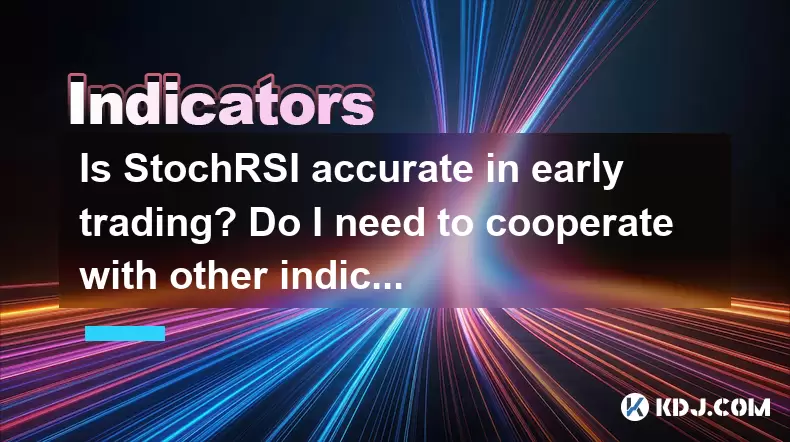
Is StochRSI accurate in early trading? Do I need to cooperate with other indicators?
May 22,2025 at 09:01pm
Introduction to StochRSIThe Stochastic RSI, or StochRSI, is a technical indicator that combines the principles of the Stochastic Oscillator and the Relative Strength Index (RSI). It aims to identify overbought and oversold conditions in the market more quickly than the traditional RSI. The StochRSI oscillates between 0 and 1, providing traders with sign...

Is DMI effective in the late trading raid? Is the sudden change of DMI before the closing credible?
May 22,2025 at 11:07pm
Understanding DMI in Cryptocurrency TradingDirectional Movement Index (DMI), often referred to simply as DMI, is a technical analysis tool used by traders to assess the strength and direction of a price trend. In the context of cryptocurrency trading, DMI can be particularly useful for identifying potential entry and exit points. The DMI consists of thr...

What are the common situations in which DMI fails? What signal will DMI give when there is a false breakthrough?
May 22,2025 at 11:49pm
The Directional Movement Index (DMI) is a popular technical analysis indicator used by traders in the cryptocurrency market to determine the strength of a trend and potential trading opportunities. However, like all technical indicators, the DMI is not infallible and can sometimes fail to provide accurate signals. This article will explore common situat...

What does WR above the zero axis represent? What does WR below the zero axis mean?
May 22,2025 at 11:56pm
In the realm of cryptocurrency trading, technical analysis plays a crucial role in understanding market trends and making informed decisions. One of the key indicators used by traders is the Williams %R (WR), a momentum indicator that helps identify overbought and oversold conditions in the market. This article will delve into the significance of the WR...

How to interpret WR extreme values? What will happen to WR long-term highs?
May 22,2025 at 10:36pm
The Williams %R (WR) indicator is a momentum indicator used in technical analysis to measure overbought and oversold levels in the market. Developed by Larry Williams, the WR indicator helps traders identify potential reversal points in the price of an asset. In this article, we will delve into how to interpret extreme values of the WR indicator and wha...

How to judge WR overbought and oversold? How to operate when WR is passivated at a high level?
May 22,2025 at 10:42pm
Understanding WR IndicatorThe Williams %R (WR), also known as the Williams Percent Range, is a momentum indicator used in technical analysis to identify overbought and oversold conditions in the market. Developed by Larry Williams, this indicator measures the level of the close relative to the high-low range over a specific period, typically 14 days. Th...

Is StochRSI accurate in early trading? Do I need to cooperate with other indicators?
May 22,2025 at 09:01pm
Introduction to StochRSIThe Stochastic RSI, or StochRSI, is a technical indicator that combines the principles of the Stochastic Oscillator and the Relative Strength Index (RSI). It aims to identify overbought and oversold conditions in the market more quickly than the traditional RSI. The StochRSI oscillates between 0 and 1, providing traders with sign...
See all articles
























